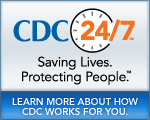MMWR
Morbidity and Mortality Weekly Report
MMWR News Synopsis for April 19, 2007
- Human Rabies a€“ Indiana and California, 2006
- Use of Niacin in Attempts to Alter Results of Urine Durg Screening a€“ Five States, January-September 2006
- Hypothermia-Related Mortality a€“ Montana, 1999-2003
- Gastroenteritis among Attendees at a Summer Camp a€“ Wyoming, June-July 2006
There will be no MMWR telebriefing scheduled for:
April 19, 2007
Human Rabies a€“ Indiana and California, 2006
PRESS CONTACT: CDC — Division of Media Relations
(404) 639-3286
In 2006, two human cases of rabies, both in children, occurred in Indiana and California. The risk of rabies acquisition was not recognized at the time of exposure for either child. Given the characteristic signs and symptoms, and the history of suspect animal exposure, a laboratory diagnosis of rabies was confirmed. In 2004, a remarkable recovery occurred in a rabid patient after experimental therapy was initiated, but this particular treatment was unsuccessful in saving the life of either child. Rabies is a fatal viral disease acquired by a bite of infected animals. Although animal rabies is common in the USA, particularly among bats and wild carnivores, such as raccoons, skinks, and foxes, human rabies is uncommon. Rabies has the highest cast fatality rate for any infectious disease, but it is preventable if the person receives prompt and properly instituted treatment before the onset of clinical illness. Although no proven treatment exists, once symptoms are present rapid diagnosis is critical. Experimental therapies are considered for individual patients on a case-by-case basis.
Use of Niacin in Attempts to Alter Results of Urine Durg Screening a€“ Five States, January-September 2006
PRESS CONTACT: Carrie Mendoza
Rocky Mountain Poison and Drug Center (RMPDC)
(303) 739-1245
No Summary Available
Hypothermia-Related Mortality a€“ Montana, 1999-2003
PRESS CONTACT: CDC - National Center for Environmental Health
Office of Communication
(404) 498-0070
Hypothermia can be fatal and is preventable. Hypothermia can be fatal and is preventable. In 2003 the United Statesa€? annual crude death rate was 0.2 per 100,000 population. It is defined as a core body temperature less than 95 degrees F (35.0? C) and occurs in individuals exposed to excessive cold. In severe cases when body temperature drops too low, the brain is affected and victims may be unable to think clearly or move well exacerbating exposure. Warning signs include shivering, confusion, fumbling hands, slurred speech and drowsiness. Risk factors for death include advanced age, substance abuse, altered mental status, and contact with substances that promote heat loss (i.e., water). Health promotion, disease prevention strategies that incorporate community involvement are essential in reducing hypothermia morbidity and mortality
Gastroenteritis among Attendees at a Summer Camp a€“ Wyoming, June-July 2006
PRESS CONTACT: Richard Luce, DVM
Wyoming Department of Health
(307) 631-0177
Public health officials, health-care providers, and water quality regulators should be aware of the potential for septic contamination of well water at rural summer camp sites that lack appropriate water and septic systems. This report describes an investigation by the Wyoming Department of Health, the Wyoming Department of Agriculture (WDA), and the Wyoming Department of Environmental Quality into illness caused at a youth summer camp in 2006. The investigation determined that illness was likely due to contamination of well-water that was partially attributable to a faulty septic system.
####
- Historical Document: April 19, 2007
- Content source: Office of Enterprise Communication
- Notice: Links to non-governmental sites do not necessarily represent the views of the CDC.
View Press Releases in
Get e-mail updates
To receive e-mail updates about this page, enter your
e-mail address:
Contact Us:
- Centers for Disease Control and Prevention
1600 Clifton Rd
Atlanta, GA 30333 - 800-CDC-INFO
(800-232-4636)
TTY: (888) 232-6348 - Contact CDC-INFO


